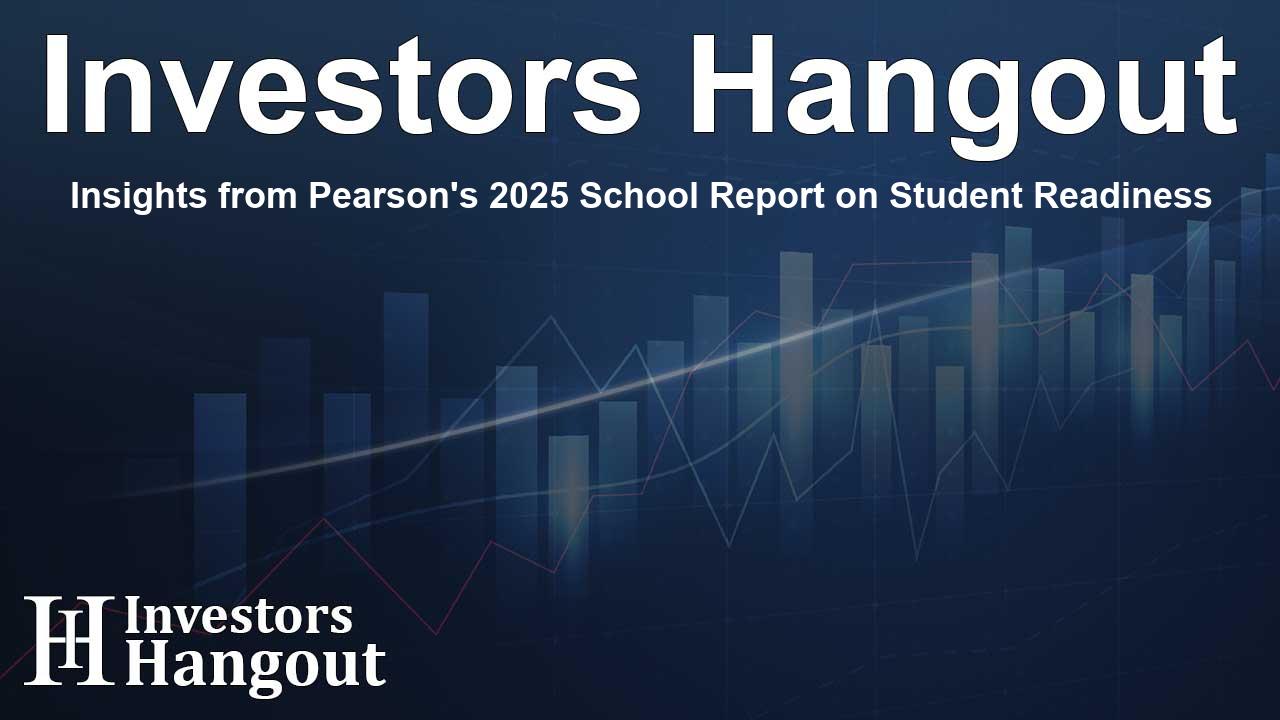Insights from Pearson's 2025 School Report on Student Readiness

Pearson School Report 2025: Insights on Student Readiness
New insights from Pearson bring to light a pressing concern in the educational landscape: a staggering 1.65 million primary and secondary students, along with over 250,000 college students, may not be adequately prepared to advance to their next level of education. This report emphasizes the critical need for an examination of student readiness in both emotional and academic domains.
Understanding Student Readiness
The findings from the 2025 Pearson School Report, titled Learning for Life, surveyed nearly 11,000 educators, including school teachers and college tutors. Their feedback focused on the readiness of students at various stages of education, particularly at the end of primary school, Year 11, and among young adults transitioning from college.
The Challenges Identified
According to the report, educators perceive that at least one in three students (32% in primary and 31% in secondary) feel unprepared for future challenges, with college tutors indicating that 43% of 16-18-year-olds share similar concerns. The key factors affecting readiness have been categorized into three educational phases:
Primary Education Challenges
- Special Educational Needs and/or Disabilities (79%)
- Struggles with writing (75%)
- Independence issues (73%)
Secondary Education Challenges
- Self-motivation (77%)
- Independence (65%)
- Social maturity (62%)
College Education Challenges
- Digital wellbeing (30%)
- Critical thinking (30%)
- Writing difficulties (28%)
Interestingly, the report also reflects students' views. Almost 1 in 5 school students and 1 in 4 college students express anxiety about their readiness to tackle future academic or career endeavors.
Proposed Solutions from the Survey
To address these challenges, respondents suggest a variety of practical solutions aimed at fostering improved student outcomes. A notable emphasis is placed on adopting a more flexible, student-centered approach. Key recommendations include:
Enhanced Learning Approaches
- Connecting Lessons to Real Life: Many students advocate for the inclusion of practical life skills such as budgeting and public speaking in their curriculums.
- Emphasizing Practical Skills: There's a strong call for teaching essential creative and digital skills among secondary education students.
- Preparing for AI Advancements: A significant portion of teachers feels inadequately equipped to prepare students for an AI-driven world, highlighting the need for increased training.
- Career Readiness: Only a small fraction of teachers believe that the current education system effectively prepares students for future careers, prompting concern among students.
- Focus on Broader Skills: Teachers highlight the importance of fostering qualities such as self-confidence, problem-solving, and critical thinking over mere academic success.
- Curriculum Redesign: There's a consensus calling for a reduction in curriculum volume and a less significant emphasis on final exams, with various assessments considered more beneficial.
These insights are critical, as they not only highlight the immediate academic concerns but also underline the long-term implications of student preparedness for their futures.
Voices from the Education Sector
Freya Thomas Monk, Managing Director of Pearson Qualifications, commented on the findings, noting that this extensive survey offers an invaluable opportunity for educators to reshape and improve educational pathways. She stressed the urgent need for a more engaging curriculum and flexible assessments to better prepare students for their upcoming challenges in a rapidly expanding world.
Jason Elsom, Chief Executive of Parentkind, emphasized the importance of preparing students for an era that will be drastically different as technology continues to advance. He raised concerns over the evolving job market and the necessity for children to be lifelong learners to adapt to future challenges.
Frequently Asked Questions
What did the Pearson School Report reveal about student readiness?
The report highlighted that millions of primary and secondary students, as well as college-level learners, may not be adequately prepared for their next educational steps.
What factors affect student readiness according to the report?
Key factors include Special Educational Needs and disabilities, writing struggles, self-motivation, and the ability to adapt to technological advancements.
How many educators participated in the Pearson survey?
Nearly 11,000 teachers and tutors contributed their insights to the report.
What solutions were suggested to improve student outcomes?
Recommendations include enhancing real-life learning connections, prioritizing practical skill development, and reducing curriculum volume to better prepare students.
Who are the key figures mentioned in the report?
Freya Thomas Monk and Jason Elsom are significant voices discussing the findings and implications of the report.
About The Author
Contact Kelly Martin privately here. Or send an email with ATTN: Kelly Martin as the subject to contact@investorshangout.com.
About Investors Hangout
Investors Hangout is a leading online stock forum for financial discussion and learning, offering a wide range of free tools and resources. It draws in traders of all levels, who exchange market knowledge, investigate trading tactics, and keep an eye on industry developments in real time. Featuring financial articles, stock message boards, quotes, charts, company profiles, and live news updates. Through cooperative learning and a wealth of informational resources, it helps users from novices creating their first portfolios to experts honing their techniques. Join Investors Hangout today: https://investorshangout.com/
The content of this article is based on factual, publicly available information and does not represent legal, financial, or investment advice. Investors Hangout does not offer financial advice, and the author is not a licensed financial advisor. Consult a qualified advisor before making any financial or investment decisions based on this article. This article should not be considered advice to purchase, sell, or hold any securities or other investments. If any of the material provided here is inaccurate, please contact us for corrections.
